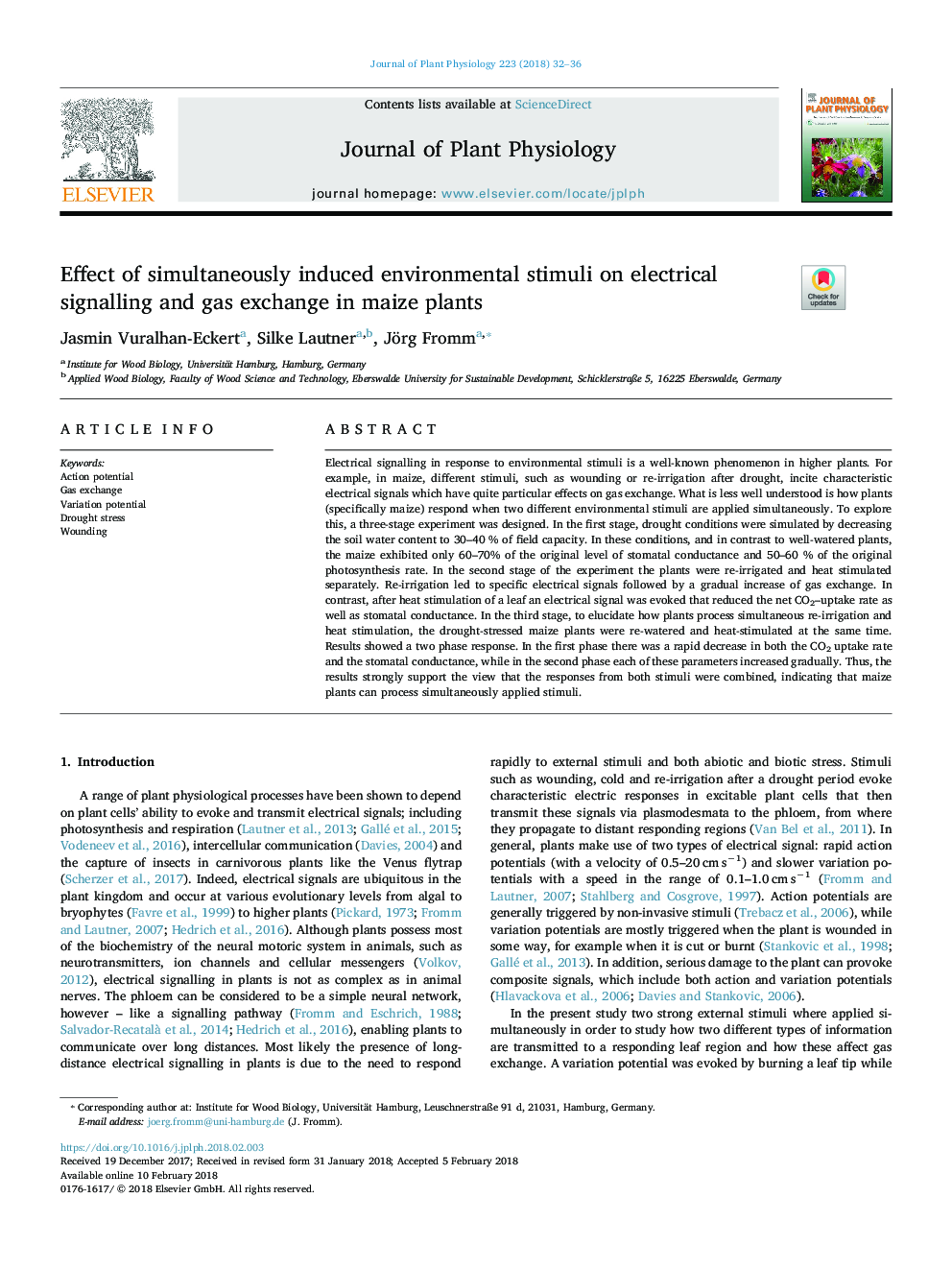| Article ID | Journal | Published Year | Pages | File Type |
|---|---|---|---|---|
| 8386872 | Journal of Plant Physiology | 2018 | 5 Pages |
Abstract
Electrical signalling in response to environmental stimuli is a well-known phenomenon in higher plants. For example, in maize, different stimuli, such as wounding or re-irrigation after drought, incite characteristic electrical signals which have quite particular effects on gas exchange. What is less well understood is how plants (specifically maize) respond when two different environmental stimuli are applied simultaneously. To explore this, a three-stage experiment was designed. In the first stage, drought conditions were simulated by decreasing the soil water content to 30-40 % of field capacity. In these conditions, and in contrast to well-watered plants, the maize exhibited only 60-70% of the original level of stomatal conductance and 50-60 % of the original photosynthesis rate. In the second stage of the experiment the plants were re-irrigated and heat stimulated separately. Re-irrigation led to specific electrical signals followed by a gradual increase of gas exchange. In contrast, after heat stimulation of a leaf an electrical signal was evoked that reduced the net CO2-uptake rate as well as stomatal conductance. In the third stage, to elucidate how plants process simultaneous re-irrigation and heat stimulation, the drought-stressed maize plants were re-watered and heat-stimulated at the same time. Results showed a two phase response. In the first phase there was a rapid decrease in both the CO2 uptake rate and the stomatal conductance, while in the second phase each of these parameters increased gradually. Thus, the results strongly support the view that the responses from both stimuli were combined, indicating that maize plants can process simultaneously applied stimuli.
Related Topics
Life Sciences
Agricultural and Biological Sciences
Agronomy and Crop Science
Authors
Jasmin Vuralhan-Eckert, Silke Lautner, Jörg Fromm,
